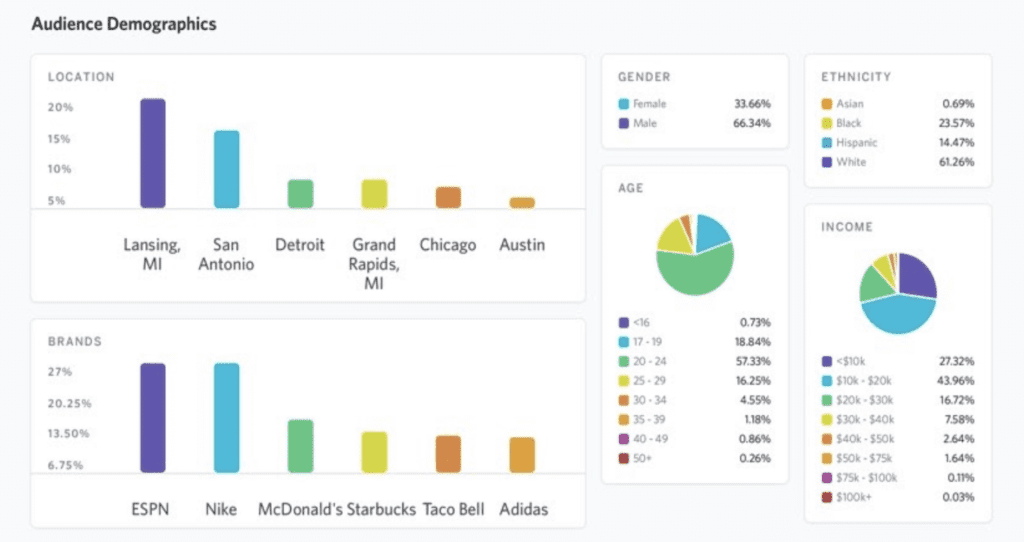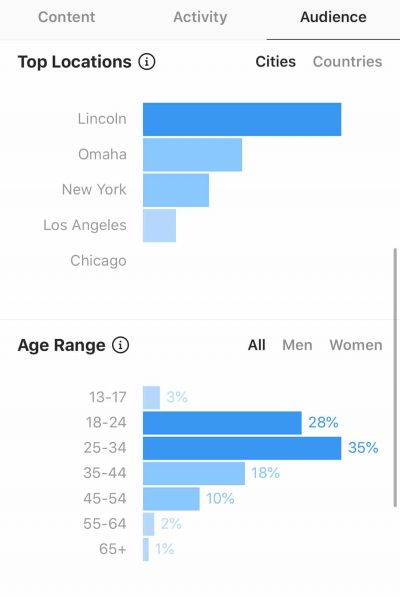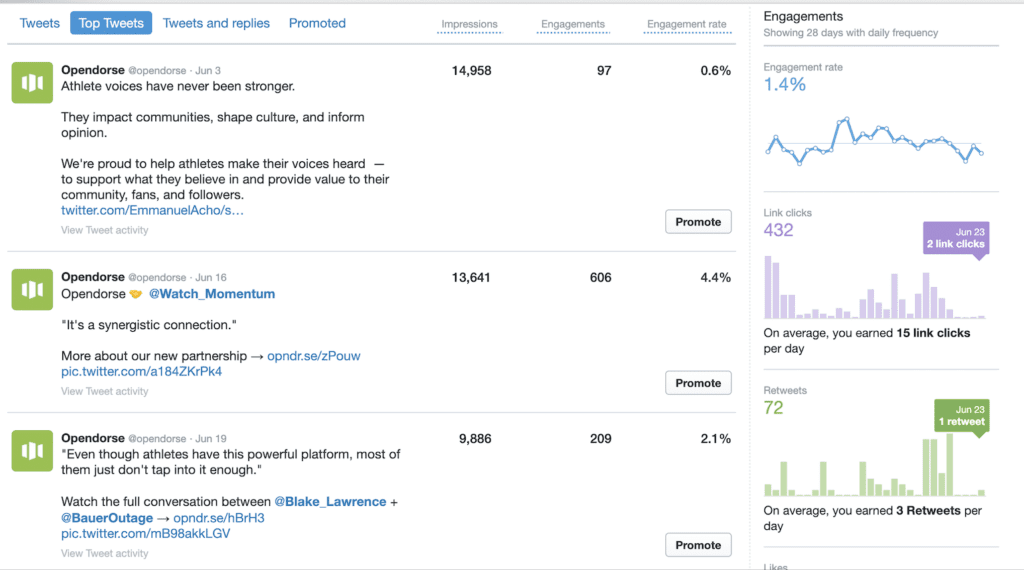Athlete marketing is an art and science. While industry marketers are armed with actionable data, there are many variables at play when it comes to how a brand determines which athlete to work with.
A brand may be after affiliation with a select superstar. Perhaps an athlete’s ideals or interests align perfectly. Or maybe that athlete was simply available at the right time, at the right price.
But one attribute is both the result of an athlete’s efforts and their most marketable asset — their audience. The ability to reach and engage a specific audience is the most powerful information an athlete has to prove their marketing value and influence.
In a recent interview, athlete marketing expert Zach Soskin explained the ultimate opportunity for athletes with:
Once you find your audience, the brand dollars will always find you.”
With more data available to marketers than ever before, many brands are starting with an audience-first approach. It allows them to begin with their target market in mind, and build athlete marketing campaigns featuring talent with access to that specific audience.
Ultimately, marketers want to reach the people who follow an athlete through their most trusted outlet — the athlete. And the athletes who show the ability to reach, engage, and establish conversation with specific groups are armed with the ultimate pitch to sports marketers.
The NIL era will put even more emphasis on the student-athlete’s audience, and their level of engagement within it. With hundreds of athletes on each campus with social media followings primarily made up of that school’s fanbase, athletes can set themselves apart in two ways:
- Audience Size
- Audience Specificity
Let’s start with size. Some of the biggest winners in the NIL era will be athletes with the largest followings. An athlete who can reach the most fans of X University will clearly be marketable to brands who want to reach that community.
But outside factors often play into the size of an athlete’s audience. Without standout success in a high-exposure sport, few are able to build fanbase-commanding audiences like a Heisman contender or All American.
Athletes without superstar-levels of exposure can still build their audience, but their marketability may lie in their ability to engage and grow a specific subset of their followers. These connections are often built from interests and activities. From their presence in a sport, to what they share from life beyond the field or court; athletes all have the opportunity to build and engage hyper-specific specific communities that are valuable to marketers.

Understand Your Audience
Your audience is a living, breathing system of communities and individuals who have made the decision to follow you.
For student-athletes, that audience is typically made up of fans of your school and sport throughout your athletic journey. You have followers from your hometown and high school; followers who tracked your recruitment; and finally, followers from your program’s current fanbase.
For most, your current fanbase is your largest, and most valuable group of followers. NIL opportunities for most athletes are projected to come from sponsors of your program and local businesses aiming to reach that fanbase.
But that fanbase and community isn’t identical. Within that audience, there are hundreds of different consumer profiles. There are fans of every age group, various geographies, and variable income levels. They have offsetting interests and consume different media.
The more you dig into who follows you, the better you can engage with them. Understanding your audience now will allow you to share the content that engages them, or attracts a new, different set of followers.
To become the most marketable athlete possible, you have to understand who your audience consists of.
Who Are Your Fans?
Start with the basic demographics. Where does your audience live? What age groups do they represent? What’s the gender breakdown?
If you have an Instagram business or creator profile (and you should), this demographic information is easy to find. Just click the “Insights” tab in your profile to begin understanding who makes up your IG fan base.

Typically, student-athlete social media audiences are made up primarily of your current program’s fanbase. And while you’re in the program, your school’s fans also represent your biggest opportunity for growth. But they’re not all the same. Within each fanbase, there are dozens of subsets of users. They have different interests, use different platforms, and connect with a wide range of content.
So rather than only pursuing the fanbase as a whole, you need to dial in and understand which subsets are most accessible and valuable to you.
What do they care about?
You probably have a good feel of what your program’s fanbase cares about… tradition, wins and losses, offseason workouts, “insider” news, and hopefully, your perspective as a student-athlete.
But to take your audience and engagement to the next level, you need to understand their interests and match them with your own. These shared interests between you and your fans create subgroups within the fanbase at large. The fans that a.) love your program and b.) share your interests, represent your opportunity to build strong, lasting relationships with your fans.
The good news is that the spectrum of interests is huge, and you’re sure to share a few with your fans. Maybe it’s fitness and working out. Maybe it’s your taste in music, or even your ability to create it. Consider your skills and hobbies… do you hunt and spend time outdoors? Do you play an instrument? Do you have future goals for a career in sports journalism? Each of these is a connection opportunity.
Whatever your interests adjacent to and beyond your sport — make the audience aware. Share those passions with your fans, and you’ll be rewarded with increased exposure and engagement from like-minded groups within your school’s fanbase.
What do they engage with?
Fans love hype videos and highlight reels. That content is a safe bet, but if that’s all you’re sharing, there’s a chance you’re leaving followers and eventual NIL value on the table.
In addition to sharing the footage produced by your program’s creative team, look to create content that puts your interests on display, and work to understand what is connecting with your audience.
You can do this manually by keeping track of which posts, and types of posts, get the most engagement or result in new followers. More effectively, though, you can use free tools like Twitter Analytics to analyze your post performance.
By understanding what content resonates with your fans, you can scrap ineffective efforts, while doubling down on the posts that your fans love, and bring value to your channels.

What’s Next?
Now you can begin to build your blueprint. Answer the questions above and begin to put your plan on paper. By embracing your why, understanding interests, and examining your current habits, you will be in position to be prepared for NIL.
Next week, we’ll share tips on what to share and where to take your following to the next level.




